American Goldfinch (Carduelis tristis)
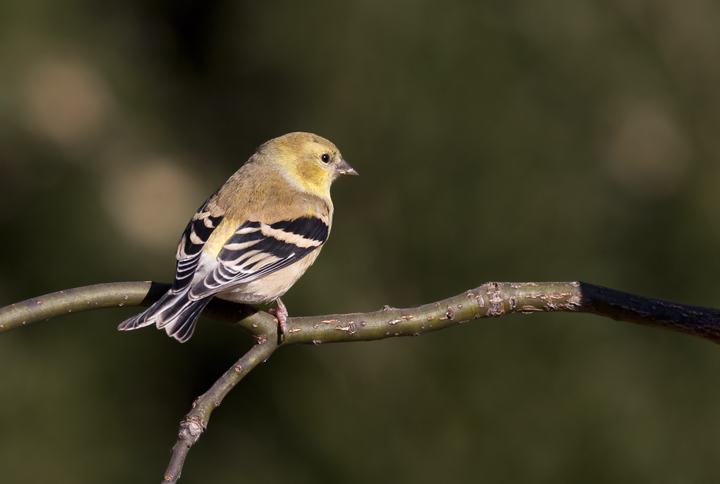
Above: An American Goldfinch in Pasadena, Maryland (12/25/2008).
Below: Our yard's celebrity goldfinch,"Old Whiteface," enjoys his second Christmas at Casa de Hubick (12/25/2008).
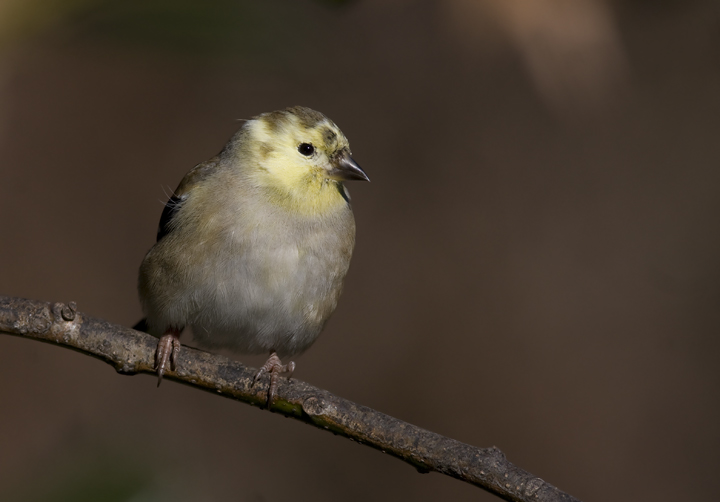
Below two: A nesting male American Goldfinch foraging at Cromwell Valley Park, Baltimore Co., Maryland (7/20/2006).


Below: An American Goldfinch in Worcester Co., Maryland (11/11/2007). Nonbreeding plumage.
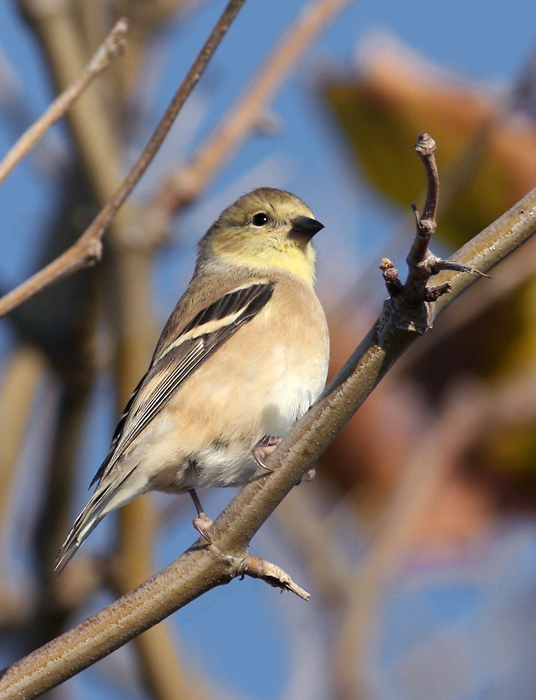
Below two also in nonbreeding plumage.
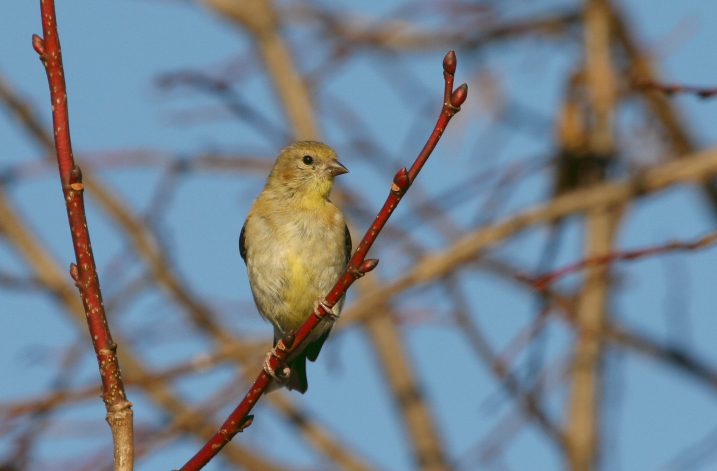

Below: Introducing "White-face," our yard's celebrity goldfinch. White-face, meet the Internet (Anne Arundel Co., Maryland, 2/9/2008).
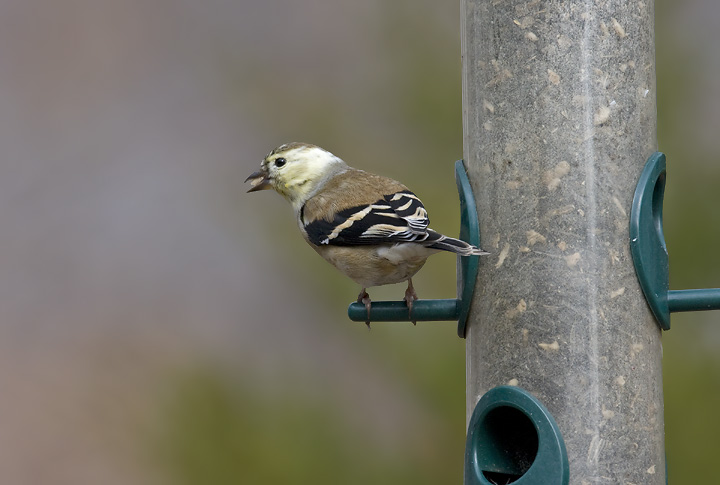
Below: A more traditional goldfinch, an acquaintance of old White-face (Anne Arundel Co., Maryland, 2/9/2008).

Below: An American Goldfinch in Carroll Co., Maryland (1/5/2009).

Below: American Goldfinches foraging in Anne Arundel Co., Maryland (6/25/2011).
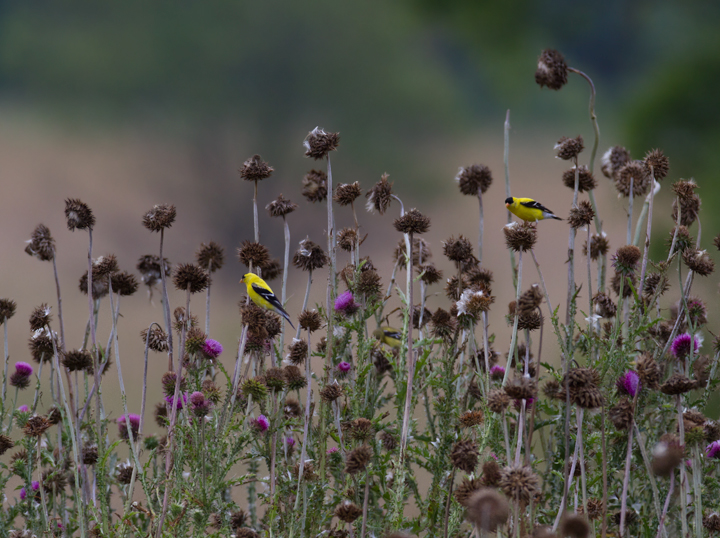
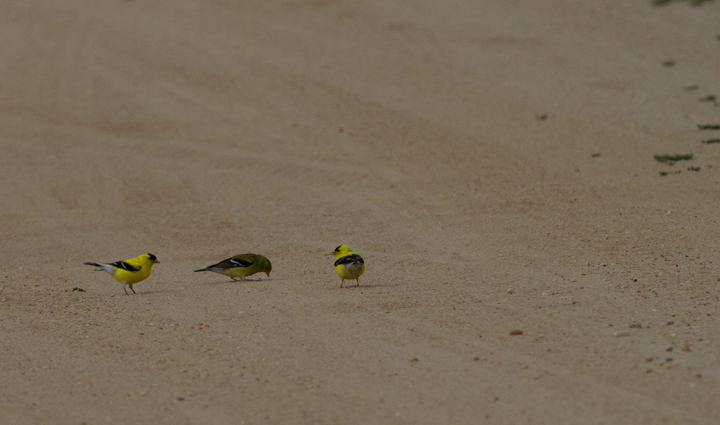
Comments: The brilliant canary yellow of the male American Goldfinch makes it a popular guest at feeders across the United States. Along with his bright yellow breeding plumage, the male has a black cap and black wings with white edging. Females, juveniles, and winter males are a more drab olive color. Because of its heavy reliance on thistle and weed seeds, this bird is one of the last to nest each year, waiting until mid- to late summer to take advantage of the seed surplus. Until then, large flocks forage together in thickets and grassy areas. Note these birds' heavily undulating flight pattern, which is even more exaggerated during the males' breeding season displays. Interested in attracting these beautiful birds to your home? Hang a niger seed ("thistle") feeder in your yard!
Interesting note: Niger seed, which is often referred to as "thistle," is actually imported from Africa. Guizotia abyssinica is cultivated from 4' to 7' yellow flowers that also provide cooking oil used in parts of Africa and Asia. USDA regulation requires the seed to be heat-treated to prevent importation of foreign weed seeds. Niger seed is the only major bird food imported from overseas. Who knew your finches were into ethnic food? Photos taken at various locations in Maryland.
